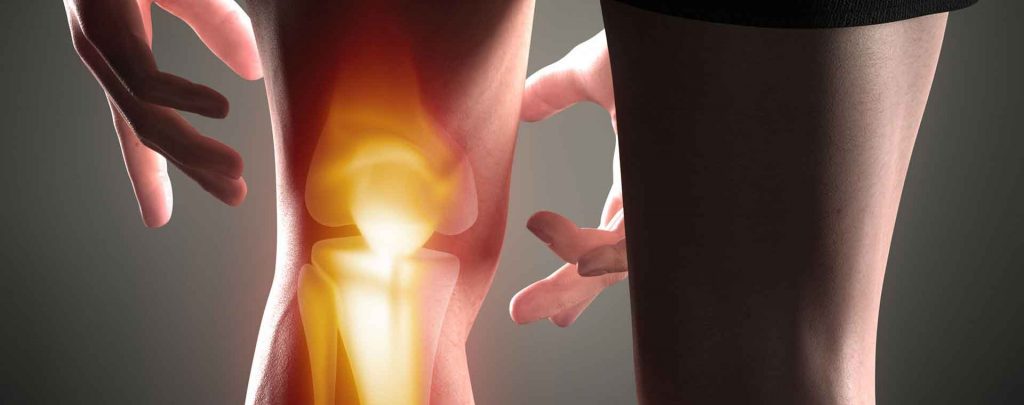ROLE OF PHYSIOTHERAPY IN ACL INJURY
Pre-Operative Goals:
● Patient education about the expected signs/symptoms, goals of rehabilitation, early post-surgical exercises and ambulation with assistive devices
● To minimize pain, swelling and inflammation.
● Full ROM and normal patellar mobility.
● To optimize muscle strength.
● To normalize gait pattern.
ROLE OF PHYSIOTHERAPY IN ACL INJURY
Post-operative
Phase |
Goals |
Interventions |
|
Phase 1 Maximum Protection Day1-Week2
|
– Control of pain, swelling and inflammation – Obtain ROM 0-90 week 1, 0-110 week 2, with emphasis on full extension* – Maintain patellar mobility – Regain muscle control – Independent ambulation with crutches WBAT* – Walking retraining without crutches can be started day 4-10** – Early weaning of brace/immobilizer is preferred*** |
– RICE – Ambulation with knee immobilizer in full ext – CPM/PROM/A-AROM 0-110 – Patellar mobilization in all directions (Grade 1-2) – Leg elevation with pillow below heel at rest – Isometric/muscle sets (quad with emphasis on VMO retraining, hamst, glutei, adductors & calf) – Isotonic open chain (OC) (knee ext 90-40) without resistance (seated), hamstring prone exercises (0-90) – Isotonic closed chain (CC) (knee flex 0-60) (mini squats, wall slides and sit-stand from high chair with VMO control) – Electric stimulation of quadriceps muscle (if desired) – SLR (4 planes) in full extension – Gait/stair training with crutches WBAT – Heel/toe raises, marching, step ups/downs
|
|
Criteria to progress to phase 2 |
– Less pain level (VAS) – Minimal swelling – ROM 0-110 – Good patellar mobility – Good muscle control to perform a mini squat 0–30 and SLR (4 planes) – Independent ambulation with crutches WBAT
|
|
|
Phase 2 Moderate Protection Week 3-9 |
– Continue control of pain, swelling and inflammation – Good patellar mobility – Full ROM (lack of extension can be treated aggressively to prevent arthrofibrosis) – Improve muscle flexibility – 4/5 muscle strength – Normal gait pattern and ADL functions – Improve proprioception and neuromuscular stability – Improve cardiopulmonary endurance |
Continue as in phase 1, in addition to: – Patellar mobilization in all directions (Grade 3-4) – CPM/PROM/A-AROM to full flex – LE stretching program (hamst, ITB, calf & adductors) – Increase intensity of isometric exercise – Isotonic OC (knee ext 90-30) with progress in the resistance (quad bench, sand weights & therapand) – Isotonic CC (knee flex 0-60) with progress in the resistance (step ups/downs/sides, wall squats, leg press machine & sit-stand) – Gait retraining (heel/toe raise, forward, backward, side to side, marching & on treadmill) – Progressive proprioceptive training (double-one leg stand on floor, trampoline & balance board/pad) – Cardiopulmonary endurance training (stationary cycling, swimming & ergometer) – Hydrotherapy LE exercises |
|
Criteria to progress to phase 3 |
– No or minimal pain/swelling – Full pain-free ROM and normal patellar mobility – 4/5 Muscle strength – Dynamic control of knee – Normal gait pattern. – Unrestricted ADL functions – Exercises of previous phase are carried out properly
|
|
|
Phase 3 Minimum Protection Week 9-16 |
– Maintain full ROM – Maintain muscle flexibility – Optimize muscle strength, power & endurance (75% compared to the contralateral side) – Improve neuromuscular control, dynamic stability & balance – Improve running/jumping – Improve cardiopulmonary endurance/fitness
|
– Continue LE stretching program – Advance OC with gradual increase in resistance/repetitions (quad bench, sand weights & theraband) – Advance CC with gradual increase in resistance/repetitions/double-one leg (step ups/ downs/ sides, wall squats, leg press machine & sit-stand) – Initiate isokinetic training (if desired) – Hydrotherapy LE exercises – Advance proprioception training (one leg stand on trampoline & balance board/pad with alternate arm movements) – Jogging training in a straight line, if not strong/painful/fear, try jogging in water first – Progressive jogging/running on treadmill – Outdoor jogging (week 13) – Cardiopulmonary training (cycling, swimming, jogging & stepping) |
|
Criteria to progress to phase 4 |
– No pain or swelling – Full ROM and normal muscles flexibility – Quadriceps and hamstring strength 75% compared to the contralateral side – No pain or difficulty with running & jumping – Hop, jump and squat tests 75% compared to the contralateral side – Exercises of previous phase are carried out properly
|
|
|
Phase 4 Return to Activity Week 16-24 |
– Maximize muscle strength, power & endurance – Maximize neuromuscular control – Maximize cardiopulmonary endurance/fitness – Improve agility skills, skill-specific pattern & work/sport-specific skills
|
– Continue advanced strengthening & flexibility exercises – Advanced proprioception training – Advanced cardiopulmonary/fitness endurance (cycling, swimming, running & stepping) – Plyometric exercises (bouncing, jumping rope, box jump) with slowly progress in duration/speed/double legs to single leg – Progressive agility drills training (running, turning, cutting & sprints with increase in duration and speed) – Progressive sport-specific tasks training (e.g.: training tasks of football, basketball, karate…etc)
|
|
Criteria for returning to sports |
– No pain, no swelling, – Any-active ROM – The strength of the quadriceps and hamstring muscles was 85%, compared to the contra lateral side – No functional instability of compliance – Squat-test, which increased by 85% compared with the contra lateral side – High cardio respiratory stamina – The exercises in the previous step were performed correctly – The patient tolerated the sporting activity and physical agility exercises, with a maximum duration and the frequency of – Pre-competition testing |
|
ROLE OF PHYSIOTHERAPY IN ACL INJURY
(1) In the case of the meniscus restoration of ACL rehabilitation, it follows the access control protocol, taking into account the meniscus of the remedial measures (0-90), and the NWB for 6 weeks.
(2) Instant recovery of the passive/active ROM, with a focus on full-extension, reduces pain, promotes articular cartilage homeostasis, and to prevent patellofemoral problems, and gait changes, changes in the quadriceps muscle atrophy, and arthrofibrosis.
(3) Immediate FWB without crutches within 10 days (with normal gait pattern) improves quadriceps function, prevents patellofemoral pain and does not affect the knee stability.
(4) The results of the present study show that an accelerated protocol, without any post-fixation, in which the reduction of pain, swelling, and inflammation, and the improvement in ROM, memory, power, and monitoring of neuromuscular block is the most important purposes, and has significant advantages, and will not lead to stability problems.
ROLE OF PHYSIOTHERAPY IN ACL INJURY

